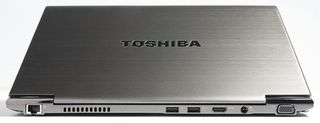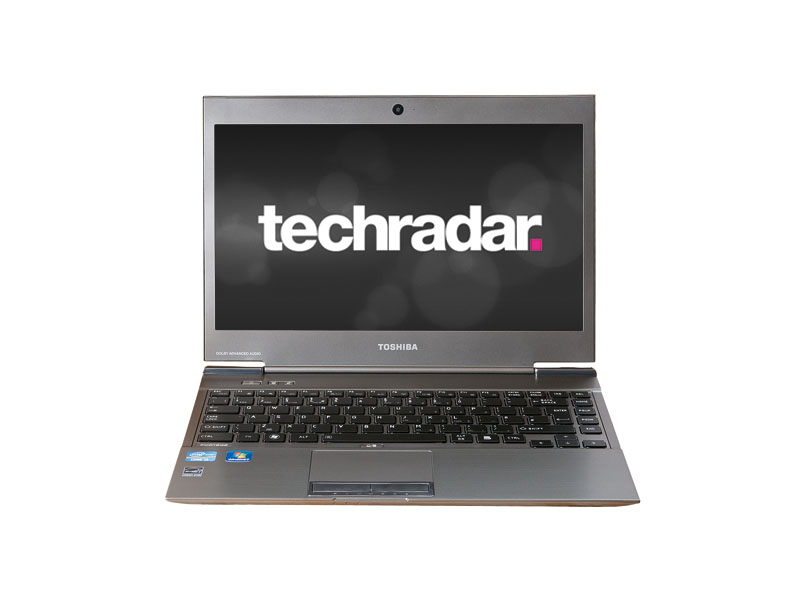TechRadar Verdict
Pros
- +
Good performance
- +
Thin and light
- +
128GB SSD
- +
Batter life
- +
WiDi compatible
Cons
- -
Some flex in chassis
- -
Bundled software
Why you can trust TechRadar
Don't be put off by the dull, grey styling: Toshiba's Z830-10N Ultrabook is quite a remarkable computer.
At 1.1kg, it's unbelievably light, even by Ultrabook standards. Likewise, the 13.3-inch screen is one of the thinnest we've seen.
However, this lightweight chassis has some drawbacks. The hinge between the lid and the rest of the laptop doesn't extend the whole way across, so every time we opened it, the screen wobbled back and forth, and with a little pressure applied, felt as though it could easily snap in half.
Likewise, while the keyboard doesn't flex as badly as those on most netbooks, it doesn't feel especially sturdy either.
At least there's a good array of ports. The rear of the device has HDMI, VGA and two USB 2.0 ports, plus Gigabit Ethernet, and there's a USB 3.0 port on the right-hand side, while a card reader and audio connectors are on the left. The sensible placing of ports at the rear allows for more connectors without sacrificing the laptop's super-thin design.

While Toshiba hasn't copied Apple's gigantic trackpad, it's still large enough, and the island-style keyboard is nicely backlit. There's a neat array of LEDs provided underneath to indicate all sorts of aspects of the laptop, such as wireless and battery power.
Quick to wake
Like all Ultrabooks, the Z830 uses a solid-state drive (SSD) so it loads apps and emerges from sleep mode quickly.
The low-voltage Core i3 2367M processor isn't suited to demanding software or 3D games, as our benchmarks show, but Ultrabooks aren't meant to be powerhouse.
Battery life is excellent. In our test it lasted for 205 minutes, enough for a day's worth of intermittent use, web browsing and general office tasks. Along with the thin-and-light design, Ultrabooks are all about computing where you can carry on working, and be certain the battery will last for the whole train journey.
Benchmarks
Battery Eater '05: 205 minutes
Cinebench: 4773
3DMark 2006: 3602
Windows 7 behaves differently on the Z830 too. Toshiba's custom wireless app can be toggled on or off even when the PC is at its boot screen, with a small window appearing at the log-in screen.
There's some more interesting technology you won't find on other laptops. Two buttons are for Toshiba's Eco mode, a setting that reduces the power consumption (although only by a few watts when idle, according to Toshiba's utility), and to switch on WiDi, Intel's new wireless display technology. If you have a TV that supports it, a quick button press will switch your computer's display to the TV, without needing an HDMI cable.
Some of the other bundled software isn't so good. McAfee constantly reminded us of its presence and enabling Bluetooth caused a long loop of driver installation that seemed to last forever. Toshiba's extra media software is fairly useless.
As Toshiba's first Ultrabook, the Z830 is an excellent computer, booting quickly and performing well. Our main gripe is the slightly flimsy lid.
The Z830 certainly fits the thin-and-light requirements of Ultrabooks though, and its plain styling could make it an Ultrabook of choice for business users.
Follow TechRadar Reviews on Twitter: http://twitter.com/techradarreview

